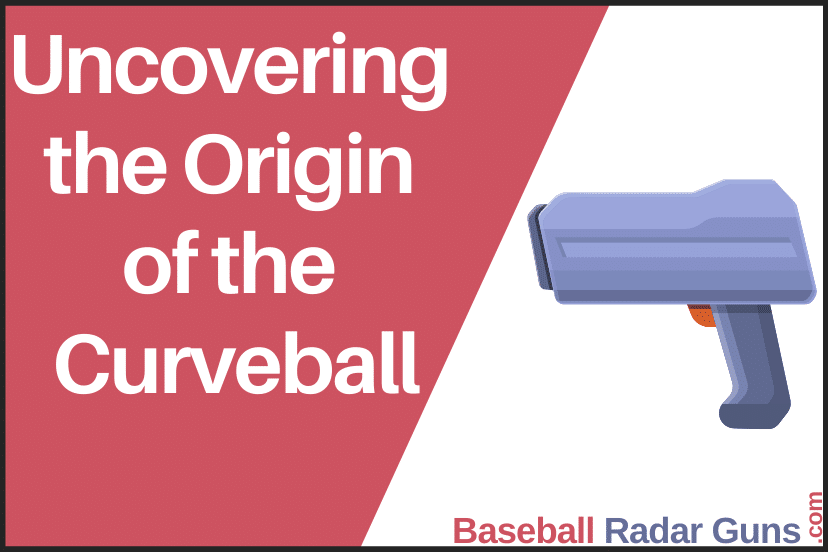Uncovering the Origin of the Curveball: A Look Back in Baseball History
*We may earn a commission for purchases made using our links. Please see our disclosure to learn more.
The curveball is one of the most iconic pitches in baseball history. It’s a pitch that has been used by countless pitchers throughout the years and has become a staple of the game. However, the curveball wasn’t always a part of baseball. In fact, it was in the early 1900s that the curveball began to gain popularity among pitchers.
In this post, we’ll take a closer look at the history of the curveball, from its earliest beginnings to its modern-day use.
Table of Contents
The Origins of the Curveball
The exact origins of the curveball are difficult to pinpoint. Some believe the pitch was first developed in the mid-1800s, while others argue that it only became a part of the game in the early 1900s.
One of the earliest recorded uses of the curveball can be traced back to a pitcher named Candy Cummings. Cummings was a pitcher in the late 1800s and is often credited with inventing the curveball. According to legend, Cummings developed the pitch after watching a clamshell curve in mid-air as he threw it. He realized that he could make it curve in mid-air by putting a spin on the ball.
However, while Cummings may have been the first pitcher to popularize the curveball, he wasn’t the first to throw it. In fact, there are records of pitchers using a similar pitch as early as the 1860s.
Regardless of its origins, it quickly became a popular pitch among pitchers. It was seen as adding an extra dimension to a pitcher’s arsenal. It was particularly effective against batters who were used to seeing only fastballs and change-ups.
The Early Days of the Curveball
In the early days of the curveball, it was still a relatively new pitch, and not all pitchers had mastered it. This led to some controversy over whether or not the pitch was fair.
Many batters argued that the curveball was an unfair pitch, as it was nearly impossible to hit. They claimed that the pitch violated the “straight pitch” rule, which stated that all pitches had to be delivered in a straight line. However, this rule was eventually overturned, and it became a legitimate part of the game.
Over time, pitchers began experimenting with different ways of throwing the curveball. Some pitchers threw it more exaggeratedly, while others used a more subtle spin. Some pitchers threw it with a sweeping motion, while others threw it with a more over-the-top motion.
One of the most famous early users of the curveball was Christy Mathewson. Mathewson was a pitcher in the early 1900s and is often considered one of the greatest pitchers of all time. He was known for his impeccable control and devastating curveball, which he used to strike out countless batters throughout his career.
The Modern Curveball
Today, the curveball is still a popular pitch among pitchers. However, how the pitch is thrown has evolved over the years.
Today’s pitchers often use a much tighter spin on the curveball, which allows the pitch to break more sharply. They also tend to throw the pitch with a much higher velocity than pitchers of the past, which makes it even more difficult for batters to hit.
One of the most famous modern-day users of the curveball is Clayton Kershaw. Kershaw is a pitcher for the Los Angeles Dodgers and is known for his devastating curveball. His curveball has been described as one of the best in the game, and he has used it to strike out countless batters throughout his career.
One of the most contentious issues in modern baseball is the debate over the legality of certain pitches, such as the spitball or the scuffball. These pitches involve using foreign substances to alter the ball’s flight, making them difficult to hit.
While these pitches were once legal, they have since been banned by Major League Baseball (MLB) due to safety concerns and a desire to maintain a level playing field. However, some pitchers continue to use these pitches, leading to accusations of cheating and call for stricter enforcement of the rules.
Another controversy surrounding the curveball is the use of foreign substances to improve spin rates. Spin rate refers to the amount of rotation a ball has as it travels through the air, and a higher spin rate can result in a more effective curveball.
However, some pitchers have been caught using foreign substances, such as pine tar or sunscreen, to increase their spin rates beyond what is considered normal. This has led to calls for greater scrutiny and enforcement of the rules and discussions about whether certain substances should be allowed in moderation.
Impact of Technology on the Effectiveness
Finally, the use of technology has significantly impacted the effectiveness of it in modern baseball. Pitchers now have access to advanced analytics and tracking systems that allow them to measure their pitches’ speed, movement, and spin rate with greater accuracy than ever before.
This has led to a renewed emphasis on developing new pitches based on the curveball, such as the slider or the cutter, as well as more effective techniques for throwing traditional curveballs. However, it has also raised concerns about the role of technology in the game and whether it has given some pitchers an unfair advantage.
The Future of the Curveball
Despite different ways of throwing the pitch, we may see even more variation in the future.
One potential growth area for the curveball is its use in data analytics. With the advent of advanced statistics like spin rate and launch angle, pitchers and coaches are able to analyze the effectiveness of different pitches in greater detail than ever before. This has led to a renewed interest in the curveball, as pitchers can use data to optimize their spin and velocity to make the pitch even more effective.
Another area where the curveball may continue to evolve is in its use in conjunction with other pitches. For example, some pitchers are experimenting with throwing a curveball that starts out looking like a fastball, only to break sharply at the last moment. This can be an effective way to catch batters off-guard and generate strikeouts.
Of course, there will always be debate over the fairness of the curveball. Some batters will argue that it’s an unfair pitch, as it’s nearly impossible to hit when thrown properly. However, the pitch is still a legitimate part of the game, and it’s up to batters to figure out how to hit it.
That being said, some of the greatest hitters in baseball history have been able to master hitting the curveball, showing that it is not an impossible feat. Similarly, for pitchers looking to improve their curveball, using a radar gun to measure the pitch’s speed and movement can help them identify the areas that need improvement. By working on these areas, pitchers can refine their technique and increase the effectiveness of their curveball on the mound, making it a valuable pitch to have in their arsenal.
If you’re interested in using a radar gun to improve your curveball, consider checking out the baseball radar guns guide. This comprehensive guide provides detailed information on the best radar guns for baseball and tips and techniques for using them effectively.
Whether you’re a beginner or an experienced pitcher, incorporating a radar gun into your training regimen can help take your game to the next level. So why not give it a try and see how it can help you improve your curveball? With dedication and practice, you’ll be throwing better, faster, and more effective curveballs in no time.




